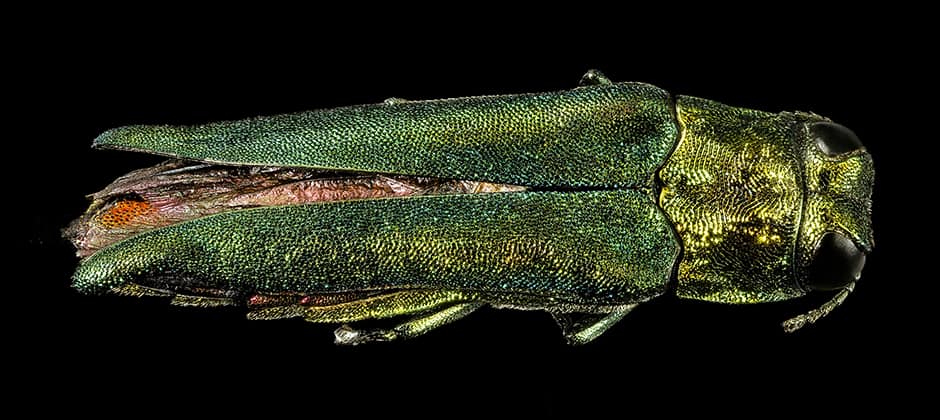Share this article
Are ash borers hopping trains to spread through forests?
An invasive insect that can destroy entire forests of ash trees in just a few years may be using a human mode of transportation to spread — catching trains.
“We’re always playing catch-up, and that’s why the insect has spread to 35 states and five Canadian provinces and counting,” said Brian Aukema, an associate professor of forest entomology at the University of Minnesota and one of the authors of a study published recently in Agricultural and Forest Entomology. “Just about all our native ash is vulnerable.”
Emerald ash borers (Agrilus planipennis), which were first detected in Iowa in 2010, kill ash trees — as well as white fringetrees — by mining the water-conducting tissue under their bark. While a handful of trees are capable of surviving outbreaks, most trees succumb to the insect and die after several years, which makes it hard to detect an invasion until it’s too late. They are so effective at killing trees that Aukema worries they may functionally extirpate all ash trees from North America by the time they make it through the continent.
Aukema’s co-author Tivon Feeley, with the Iowa Department of Natural Resources, first noticed that there seemed to be a close match between the counties that had experienced an invasion and counties with railroad tracks.
Aukema decided to look more closely at the correlation, working with undergraduate student Mara Short and other lab members to gather information on railway lines and known ash borer outbreaks in Iowa. They also took note of other possible ways they could be spreading including roads, rivers and campgrounds, where they might be stowaways in campers’ firewood.
Overlaying all of the information on maps, the researchers found that Feeley’s hunch was a good one. A strong positive correlation appeared between the presence of emerald ash borers and railroads. “It’s actually a really strong signal,” Aukema said.
He still isn’t completely sure why the railroads are helping ash borers move, but he thinks it may have to do with the heat signatures of freight cars attracting them. The insects may also leave the cars when they stop for cargo or other reasons.
This discovery is important because of the ash borer’s devastating effects. The loss of ash trees in North America would have untold effects on native hardwood forests and the species that depend on them, Aukema said.
Practices like the preservation of traditional North American basket making practice may be helpful in stopping the insects, but Aukema said this only applies to black ash and the practice is limited in the amount of trees it can protect.
He said that the delayed detection time of infestation continues to make ash borer control difficult.
“As new clues begin to uncover the insects’ movement pathways, however, researchers may be able to find new ways to slow their spread,” he said.
Header Image:
Emerald ash borers can completely destroy native North American ash forests.
©USGS Bee Inventory and Monitoring Lab








